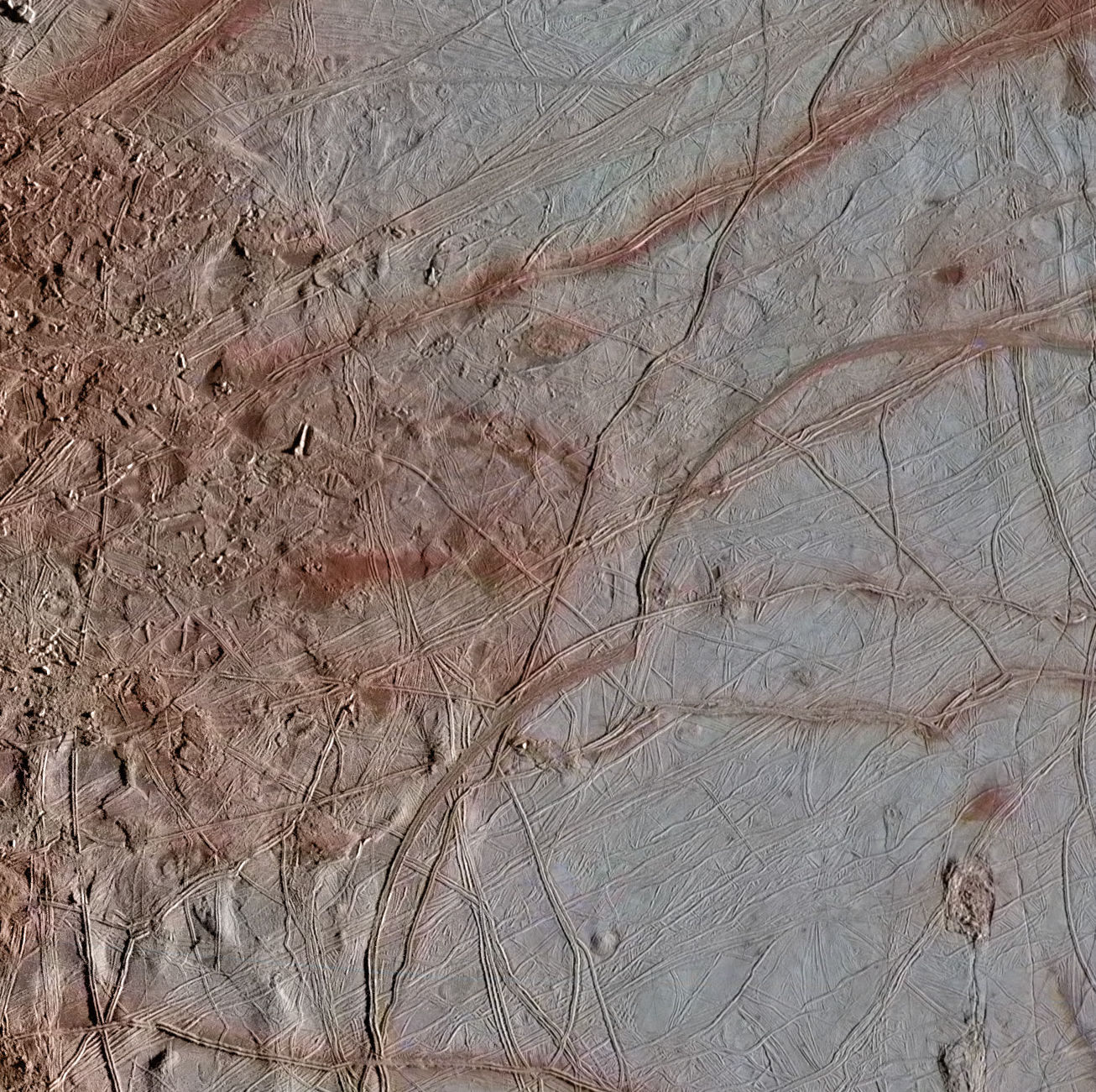
A new study published in Geophysical Research Letters finds that the chaos terrains of Europa – broken up, cracked, ridged regions – may be moving oxygen into the subsurface ocean.
Here’s how this could work. Sunlight and charged particles from Jupiter hit the icy shell of Europa, creating water and oxygen molecules. Those molecules can then mix with partially melted surface brines, or saltwater, which is then moved through the cracks of the chaos terrains. Some of those cracks can actually make their way deeper into the icy shell, depositing the briny water into the subsurface ocean and bringing oxygen with it.
And that oxygen is good for life. In fact, the model used in this study found that 86% of the oxygen taken in at the surface can make its way to the ocean. Add the long life of our solar system into the mix, and there could be plenty of oxygen in the subsurface oceans to support a lot of life. As co-author Steven Vance notes: It’s enticing to think of some kind of aerobic organisms living just under the ice.
Yes. Yes, it is. So, when does Europa Clipper launch again?
More Information
UT press release
“Downward Oxidant Transport Through Europa’s Ice Shell by Density-Driven Brine Percolation,” Marc A. Hesse et al., 2022 February 10, Geophysical Research Letters



